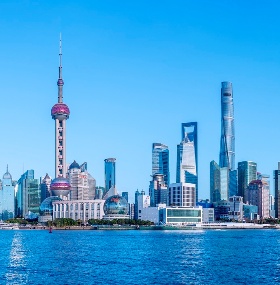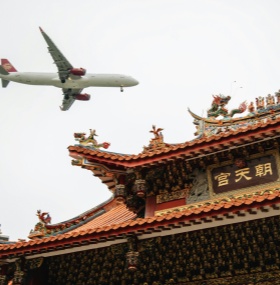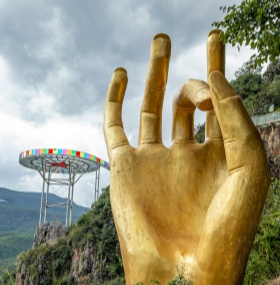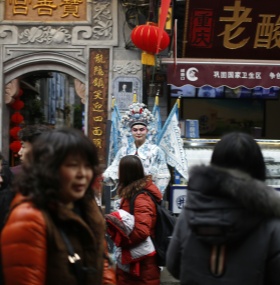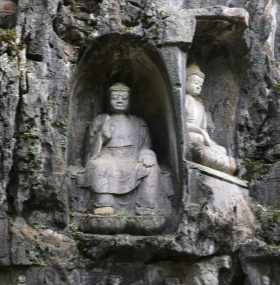China, a country of vast landscapes, ancient cultures, and modern marvels, offers an unparalleled array of photography opportunities. From the otherworldly karst peaks in Guilin to the spiritual majesty of Tibet’s highlands, China is a photographer’s dream. If you are looking to capture stunning scenery and rich cultural heritage, these 10 destinations are a must-visit for photographers.
1. Zhangjiajie: The Avatar Mountains
Zhangjiajie, located in Hunan Province, is renowned for its towering sandstone pillars, which inspired the floating mountains in James Cameron’s Avatar. The surreal landscape, shrouded in mist, provides photographers with a unique chance to capture dramatic vistas and otherworldly formations. Whether you're hiking the Tianzi Mountain or visiting the Glass Bridge, the views are simply breathtaking.
Photography Tip:
Shoot at sunrise or sunset when the light enhances the mysterious atmosphere of the mist-covered peaks.
Don’t forget a wide-angle lens to capture the scale of these massive rock formations.
2. Huangshan: The Yellow Mountains
Known for its iconic pine trees, granite peaks, and "sea of clouds," Huangshan is one of the most photographed mountain ranges in China. With dramatic landscapes and often unpredictable weather, it’s a photographer’s paradise, especially when the clouds blanket the peaks in a mystical haze. The Xihai Grand Canyon and Lianhua Peak offer some of the best vantage points.
Photography Tip:
The best time to photograph the sea of clouds is at sunrise, when the light filters through the mist and creates an ethereal glow.
Capture the ancient pines that twist and curl against the backdrop of jagged rocks.
3. Jiuzhaigou Valley: A Natural Wonderland
Nestled in the mountains of Sichuan Province, Jiuzhaigou is a UNESCO World Heritage site renowned for its colorful lakes, waterfalls, and lush forests. The bright turquoise and emerald hues of the lakes are mesmerizing, while the waterfalls and surrounding forests add a picturesque charm to the landscape. In autumn, the region transforms into a vibrant display of red, orange, and gold leaves.
Photography Tip:
Autumn is the best time to visit for stunning reflections and colorful foliage.
Visit Nuorilang Waterfall for a dramatic capture of cascading waters.
4. Tibet: The Roof of the World
With its vast landscapes, sacred lakes, and snow-capped peaks, Tibet offers some of the most powerful and spiritual photography opportunities in China. From the iconic Potala Palace to the serene Yamdrok Lake, Tibet is a land where natural beauty and religious heritage meet. Photographers can capture the contrast between the barren, high-altitude landscapes and the rich cultural traditions of Tibetan Buddhism.
Photography Tip:
Shoot the Potala Palace at sunrise when the first rays of light illuminate the red and white structures against the backdrop of the Himalayas.
Take a trip to Lake Namtso for stunning images of the turquoise water surrounded by snow-capped mountains.
5. Lijiang and Dali: Ancient Towns and Lakeside Views
Both Lijiang and Dali are known for their charming old towns, picturesque lakes, and surrounding mountains. Lijiang’s Old Town, with its traditional Naxi architecture, narrow streets, and vibrant markets, offers endless opportunities for street and cultural photography. Meanwhile, Dali, with its Erhai Lake and the Cangshan Mountains, provides a tranquil setting for capturing rural life and serene landscapes.
Photography Tip:
Lijiang's Old Town looks magical at dawn, with fewer crowds and soft light.
In Dali, photograph the Cangshan Mountains reflected in Erhai Lake at sunset for a stunning composition.
6. Guilin and Yangshuo: The Land of Karst Peaks
The limestone karst mountains of Guilin and Yangshuo are some of the most iconic landscapes in China. The Li River cruise, which passes through towering peaks and tranquil waters, is one of the best photography experiences. The landscape is complemented by the lush greenery of the rice paddies and traditional fishing boats, making it an ideal destination for capturing traditional rural life alongside stunning natural beauty.
Photography Tip:
The Li River at sunrise offers dramatic misty views of the karst peaks.
Use a telephoto lens to capture close-ups of local fishermen using cormorants to fish.
7. Zhangye Danxia: The Rainbow Mountains
Located in Gansu Province, Zhangye Danxia is known for its multicolored rock formations, which create a rainbow of hues across the landscape. These stunning geological formations are the result of millions of years of erosion and sedimentation. The landscape looks particularly vibrant during sunrise and sunset, when the light enhances the natural colors.
Photography Tip:
Capture the colorful Rainbow Mountains during golden hour when the light brings out the full spectrum of colors.
A wide-angle lens is perfect for capturing the expansive, vibrant landscape.
8. Shangri-La: Tibetan Beauty and Majestic Views
Located in Yunnan Province, Shangri-La is an enchanting destination where Tibetan culture and dramatic landscapes collide. Known for its beautiful monasteries, such as the Songzanlin Monastery, and its proximity to the Meili Snow Mountains, Shangri-La offers photographers a unique combination of spiritual and natural beauty.
Photography Tip:
Capture the stunning Meili Snow Mountain at dawn when the peaks glow in the first light.
The Tibetan festivals in Shangri-La provide excellent opportunities for cultural photography.
9. The Forbidden City: Timeless Imperial Architecture
In the heart of Beijing lies the Forbidden City, a vast imperial palace that was home to Chinese emperors for centuries. With its imposing architecture, intricate designs, and sprawling courtyards, the Forbidden City is an architectural wonder. It provides endless opportunities for photographers to capture the grandeur of ancient China.
Photography Tip:
Early mornings are the best time to photograph the Forbidden City without large crowds, with soft morning light on the ornate structures.
Use a wide-angle lens to capture the grand scale of the palace.
10. Meili Snow Mountain: Sacred Peaks and Tibetan Culture
Located in Yunnan Province, Meili Snow Mountain is one of the most sacred mountains in Tibetan Buddhism. Its towering snow-capped peaks and surrounding glaciers offer a breathtaking landscape for photographers. The region also offers a unique glimpse into Tibetan life, with traditional villages dotting the foothills of the mountains.
Photography Tip:
Capture Meili Snow Mountain at sunrise or sunset for the best light on the snow-covered peaks.
Shoot the local Tibetan villages for a cultural perspective of life in the Himalayas.
Related Posts
Create Your Customized Trip
Take about 2 minutes to fill the form to tell us how you like to travel, and get a reply within 1 working day.

